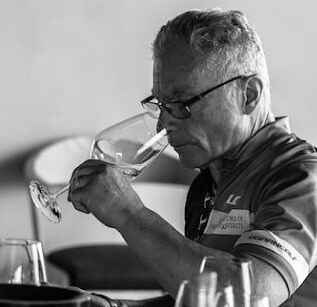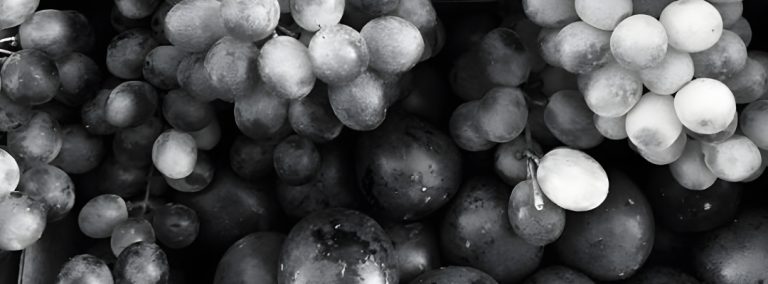From Burgundy to Bordeaux, France produces some of the most famous red wines in the world. It’s also where many major grape varietals come from, including Pinot Noir, Cabernet Sauvignon, Merlot, Syrah, and even Malbec. And while you may be familiar with some of the bigger French appellations, think Chateauneuf-du-Pape or a Beaujolais wine, there are some lesser known reds you really should try.
Wines like Chinon from the Loire Valley region and Médoc / Haut-Médoc from Bordeaux are excellent values and deserve a place at your next dinner party table.
In Languedoc-Roussillon, they’ve upgraded their wine production significantly and are now making delicious red wines that are reasonably priced and a great option for a weekday meal or family barbecue.
If you’re planning a romantic date night in, try a Gigondas from southern Rhone. Vinsobres is another wine that comes from the southern Rhone region. Local producers tend to make a lot of organic and sustainably farmed wines that are a blend of Grenache, Syrah and Mourvèdre.
Interested in having something other than rosé from Provence? Go with a wine called Bandol. If you like Beaujolais Villages, you’ll love a Beaujolais Crus. Start with a wine like Morgon which is famous for its red fruit and cherry notes.
Last but not least, if you’re looking for a fun wine to have alongside your next Tour de France viewing party, give a red from Ventoux a try! Mont Ventoux is actually one of the Tour’s most famous stages, but did you know they have vineyards growing around the mountainside? This wine won’t break your budget either at just $20-25 a bottle.
Why are French wines so popular?
France has a long history of exporting its wine to England and America. In fact, the British have been bringing in wine from Bordeaux since the marriage of Henry II and Eleanor of Aquitaine in 1152! In the United States, particularly on the East Coast, anyone who traveled abroad to Europe learned about French wines and brought some home. This included the railway barons and wealthy upper class societies of the 1890s, diplomats and later on, professors and students at Ivy League Universities. In certain circles, these trends only increased up until the 1970s and 80s when French wines became more accessible and more mainstream. However, the most imported wines from France were still primarily coming from just a handful of regions, including Burgundy, Bordeaux, and Champagne.
Today, this is no longer the case. More regions and types of French wine become available every day and you’ll even see bursts in popularity for certain types of wine. For example, Sancerre recently became one of the most sought after white wines in American restaurants, and before that it was Pouilly-Fuissé.
Major French red varietals
- Cabernet Sauvignon. This grape makes highly tannic, full-bodied red wines. It originally comes from Bordeaux and features in many Bordeaux blends, alongside Merlot, Cabernet Franc, and Petit Verdot.
- Merlot. This is another Bordeaux varietal that’s full-bodied, but softer and less tannic than Cabernet Sauvignon. You can get plum, black fruit and red fruit flavor in Merlot, and sometimes hints of vanilla if the wine has been aged in oak.
- Cabernet Franc. This is a red varietal you’ll find growing in the Loire Valley, as well as Bordeaux. Oddly enough, it’s the parent grape of both Cabernet Sauvignon and Merlot and it originally comes from the Basque area of Spain! A wine made with Cabernet Franc will be medium-bodied with raspberry and strawberry notes. You’ll also find hints of spices and herbs.
- Pinot Noir. Pinot Noir is the major red varietal of Burgundy. It’s medium-bodied and high in acid with bright, red berry flavors, as well as earthy tones.
- Syrah. This grape (known as Shiraz in Australia) is commonly grown in the northern Rhone region of France. It makes medium to full-bodied red wines that can have some spice to them, such as black pepper and herbs, along with flavors of blackberry, plum and red fruit. Sometimes you’ll even find bacon fat in Syrah aromatics!
- Grenache. This is a red varietal that does well in warmer regions. Wines made with Grenache are usually medium in body and can have flavors of strawberry and plum, with herbal notes and spices.
- Mourvèdre. Mourvèdre is another heat-tolerant varietal that you often find growing in the south of France. It gives red wine blends blackberry and raspberry notes, with hints of black pepper and cocoa.
- Gamay. Gamay is synonymous with Beaujolais as it’s the only grape used to make wines from this region. It’s light to medium in body and is full of cherry and raspberry fruit. It’s often a bright red color and has good acidity.
How wines in France are named
In France, as in Italy, wines are usually named after the regions they come from, as opposed to their grape varietal (though there are some exceptions). France is divided into 363 AOCs or appellations d’origine contrôlées which are geographic regions that each have their own unique set of rules and regulations for wine production. These rules govern both how the grapes are grown in the vineyards and how the wines are made.
Let’s take Saint-Emilion for example. Saint-Emilion is a specific appellation within the Bordeaux region. Wine from here is usually a red blend (predominately of Cabernet Franc and Merlot) and the appellation rules govern which grapes can go into it. Reds from Saint-Emilion have a unique character and style thanks in part to the terroir or land and climate where they were grown. This is one reason why France prefers regional names for its wines. It’s the uniqueness of each growing area that is the distinguishing factor. However, there are some areas in France where wine is named after the varietal with which it’s made, for example Alsace.
Wine Tip: The term terroir refers to the unique soil type, climate, elevation and angle of the sun in vineyards, all of which affect the grapes and give the resulting wine a particular character.
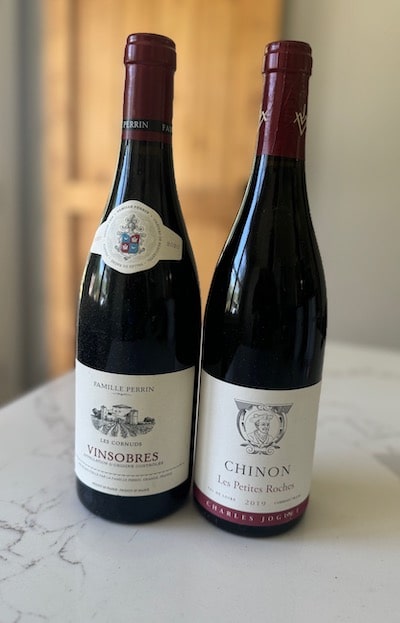

8 Red wines from France to try
Médoc / Haut-Médoc from Bordeaux
You’re having a strip sirloin and you want a nice full-bodied red from Bordeaux to go with your dinner, here’s why you should try a wine labeled Médoc or Haut-Médoc. Médoc is an area within Bordeaux (and Haut-Médoc is a sub region of Médoc), on the Left Bank of the Gironde River. They tend to make more Cabernet Sauvignon based reds here. You may have heard of Chateau Margaux and Lafite Rothschild, these wines both come from the Médoc area. The difference is they’re located in smaller sub appellations, with a particular terroir and a specific set of rules governing their production (they’re also highly sought after wines produced in limited quantities and with very high price tags!)
Wine that is just labeled Médoc or Haut-Médoc will be more affordable and is just the ticket if you like a full-bodied Cab blend. These wines tend to be produced by smaller and lesser-known chateaux or come from grapes grown in the wider region. Sometimes they’re even made with grapes bought from the more famous chateaux. The berries may not have made the cut for the high priced wine but they’ll be perfect for your next dinner party red line up. Médoc and Haut-Médoc can be red wine blends of Cabernet Sauvignon, Merlot, Cabernet Franc and Petit Verdot and you’ll find them in most fine wine shops for $18-45 a bottle. Some producers to look for include Chateau Blaignan, Chateau Loudenne, Château Larose-Trintaudon, Chateau Belgrave, Chateau Malescasse, Chateaux Greysac and Chateau Trois Moulins.
Chinon from the Loire Valley
Everyone has heard of the Loire Valley which is famous for its white wines, think Sancerre, Pouilly-Fumé and Muscadet, but did you know they make red wine here too? Cabernet Franc is the predominant red grape of the Loire Valley and they grow a lot of it in Chinon, an old walled city in Central Loire. Red Chinon wines are 100% Cabernet Franc. They’re bright ruby and purple in color and have vibrant flavors of raspberry, cherry, and cassis. They can also have some spicy characteristics to them. Serve Chinon for your next dinner gathering with friends, or even open up a bottle for a holiday meal. Producers to look for include Domaine Charles Joguet, Domaine Bernard Baudry, Domaine Jean-Maurice Raffault, Domaine Olga Raffault and Domaine Philippe Alliet. Prices will generally range from $18 up to $50 for smaller production single vineyard wine, making Chinon an excellent value French red.
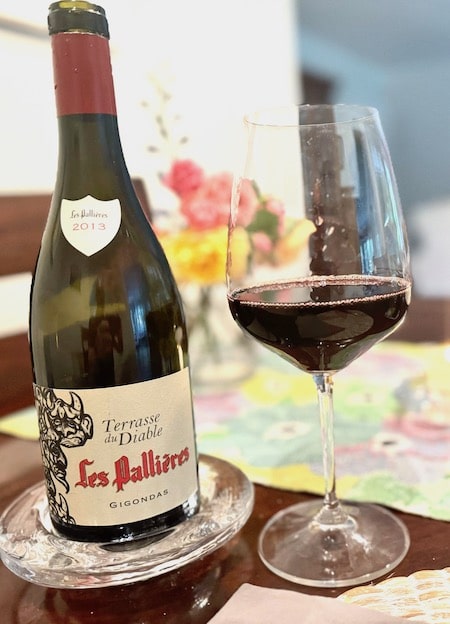
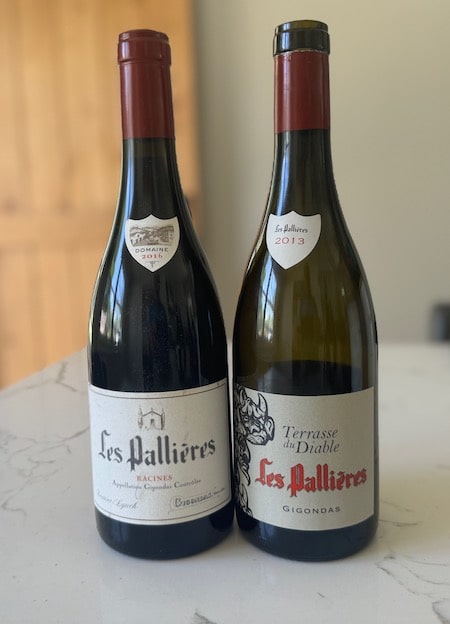
Gigondas from the southern Rhone Valley
Gigondas is an appellation in the north of the larger southern Rhone area (which also produces the famous red wine Chateauneuf-du-Pape). Gigondas is known for its medium to full-bodied, spicy reds that are predominantly Grenache based. By law the red wines must be 50% Grenache but the appellation rules also stipulate that at least 15% of the blend be either Syrah and/or Mourvèdre. These wines have good fruit, including raspberries, cherry, wild berries and currants, and you will also find spicy flavors of white pepper, along with more earthy notes, like leather. Gigondas pairs well with everything, from lamb to sausages and smoked meats. Producers to look for include Chateau de Saint Cosme, Domaine les Pallières, Famille Perrin and Domaine de la Solitude. A bottle of Gigondas retails for anywhere from $35 to $75+.
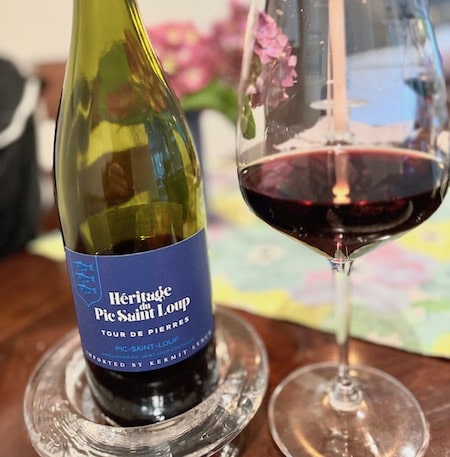
Languedoc-Roussillon
Languedoc-Roussillon has never been one of the more famous French regions for wine production. In fact, it was traditionally associated with inexpensive bulk wine produced mainly for the French market. But things have changed significantly in the past 40 years. Many quality growers in Languedoc-Roussillon are now bottling their own wines instead of selling them to be blended in large co-ops. Moreover, some wonderful older vineyards are now in the hands of a new generation of winemakers who understand that it is quality, not quantity, that’s needed to compete in today’s market. And lastly, a lot of new and up-and-coming winemakers have moved to the region, given the lower price of vineyards compared to Burgundy and Bordeaux. All this to say you can now find quality wines from Languedoc-Roussillon at very reasonable prices.
The region itself sits in the south of France, next to Provence, bordering Spain and the Pyrenees mountains. There’s no one way to describe its wines partly because there’s no main grape grown here. At a certain point, Languedoc-Roussillon was planted with over 150 varietals! Today this is down to 50-60, with Grenache, Syrah, Mourvèdre, Cabernet Sauvignon, Merlot, Carignan and Malbec being the most popular. Still, Languedoc-Roussillon is also divided into 36 sub appellations, each with their own unique climate and geography.
With such a great diversity of terroir and every winemaker doing their own thing, there’s simply no easy way to sum it up. We can only recommend you start exploring local wine to see what you can find! Here are some appellations to start with: Corbières, where the wine is dense and has a lot of spice and hints of local herbs, Faugères, where they make earthy and spicy reds, Minervois-La Livinière, which is considered the Cru of Languedoc-Roussillon and produces a rich, full-bodied red wine with berry flavors, and lastly, Saint-Chinian which is known for its robust red wines.
Cru Beaujolais Morgon
Beaujolais is an area just north of the French city of Lyon. Some people consider it part of Burgundy, while others see it as south of the region. Regardless of where you draw the border line, while most of Burgundy is busy producing Pinot Noir, here they mainly grow Gamay.
Wines made from the Gamay grape have great acidity. You may have heard of the Beaujolais Nouveau which is a young wine released in November each year, to great fanfare. Beaujolais also has ten specific villages, all of which are located on granite mounts where the soil and terroir is unique. These are the Crus. Note, you won’t see Cru on the label, rather it will say the name of the village (for a full list, have a look at this article).
Cru is the highest quality level, and of the Crus we recommend you try Morgon. Morgon is a wine with bright cherry and raspberry fruit and aromatics. It will also be fuller-bodied and more richly flavored. Some well known producers include Jean-Paul Brun, Domaine Louis-Claude Desvignes, Domaine Jean Foillard, Domaine Lapierre, and Jean-Paul Thévenet. You can find Morgon in most fine wine shops. Expect to pay anywhere from $25-60 a bottle.
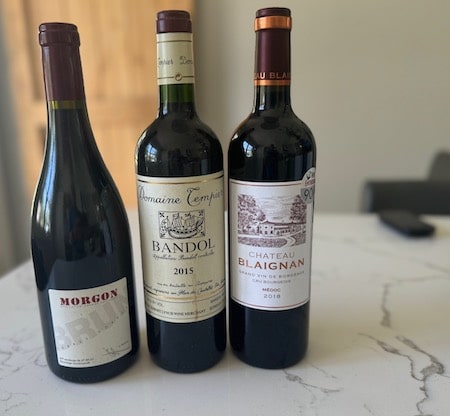
More wines from the south of France
- Bandol. Bandol is a deeply colored, leathery wine that has savory and spicy notes to it with hints of wild herbs. It’s full-bodied and made primarily with Mourvèdre (up to 95%) which is a grape that does well in warmer temperatures. It can also have some Grenache, Carignan, Cinsault and Syrah in the blend. This wine comes from the southern French region of Provence and is the most famous red wine produced in the area. Bandol itself is quite small. Vineyards run along the Mediterranean and they also make some of the most expensive and acclaimed French rosés here. Bandol reds have to be aged for a minimum of 18 months in barrels and then another three in bottles before they can be fully appreciated. This wine will definitely fall in the upper end of your budget, but is a special treat you can put away for a few years. It’s a wine that is dramatic, rich, deep and quite long lived. Prices start at $45 and can run up to $150 a bottle. Look for Domaine Tempier which is the highest and most sought after producer for reds.
- Vinsobres. With its excellent fruit flavors of blackberry and black currant, spiciness and hints of leather, Vinsobres is a great option if you’re looking for a moderately priced French red that’s medium to full-bodied. This wine is predominantly Grenache based, but can also have Syrah, Mourvèdre and/or Cinsault in the blend. Vinsobres are known to have great complexity to them and finesse, which makes them one of the better values in French red wine. They can also be aged. Another reason to try Vinsobres is the bulk of the vineyards are organically or sustainably farmed! Expect to pay between $20-30 a bottle.
- Ventoux. Ventoux, formerly known as Cotes du Ventoux is a wine growing area in the southern Rhone named after the 6,300 foot mountain Mont Ventoux. You may have heard of this mountain in a French cycling context as its slopes provide one of the most famous and challenging climbs of the Tour de France. Red wine from Ventoux can be made with Carignan, Cinsault, Grenache and Syrah. The Cinsault adds cherry and cranberry fruit to the wine. Even though grapes grown here are subjected to the hot Mediterranean summer sun, the vineyards benefit from higher altitudes and cooler mountain breezes at night. Expect the wine to have fresh raspberry fruit and some spice, with good acidity, thanks to this cooler air. Ventoux wine is reasonably priced at $15-30 a bottle, the only thing is you may have to look hard to find it in the US (ask your local wine shop to order some in). Note, these are red wines made for drinking young.
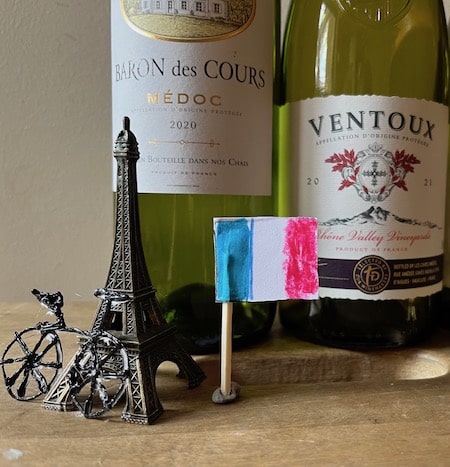
If you like Pinot Noir
When you think of French Pinot Noir, Burgundy is often the first place that comes to mind. It’s the birthplace of the Pinot Noir grape and it’s pretty much the only red wine they make, apart from Beaujolais. Unfortunately, because of the high demand for Pinot Noir and a few years of low yield vintages, Burgundy wines have increased in price significantly – they’ve doubled in the last five years! This means you’re going to pay $40-50 as a starting price and that’s for a lower-end wine. Single vineyard Grand Cru Burgundy wines can sell for up to $2000 a bottle.
But what not everyone knows about is that many French producers in the region also make a wine called Bourgogne Appellation Pinot Noir. This wine comes from grapes grown within the Bourgogne appellation that might not have reached the quality level required for a Premier Cru or village wine. Nonetheless, they’ll still have some of the unique characteristics of a Burgundy Pinot Noir, including lean cherry and raspberry fruit with more subtlety, minerality and earthy tones, compared to the bigger and more fruit oriented Pinots from California. You can expect to pay $25-50 for a bottle of Bourgogne Appellation Pinot Noir and you’ll likely need a fine wine shop to find it! Note, the wine will just say Bourgogne on the label.

